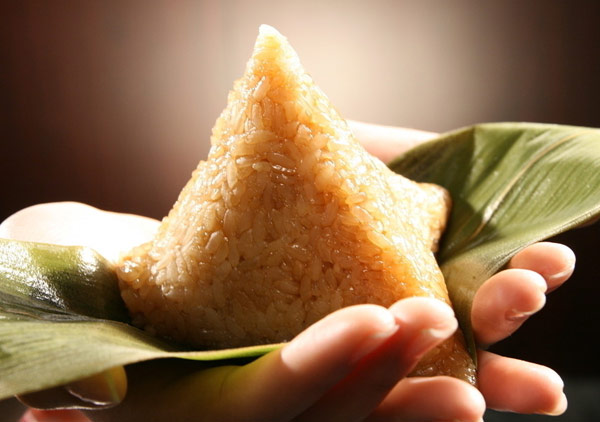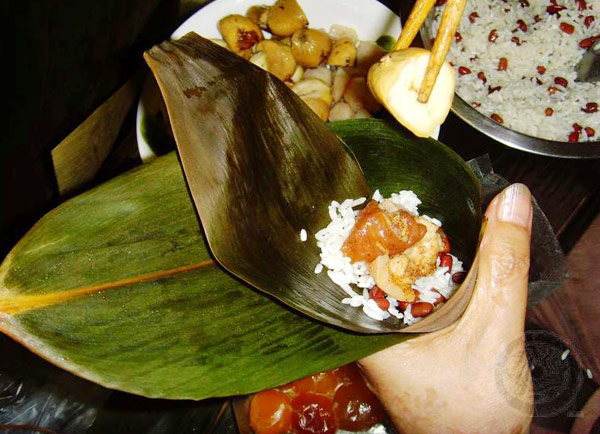About Zongzi - Chinese Rice Dumpling
In the tapestry of Chinese cuisine, Zongzi stands as a time-honored Dragon Boat Festival food that weaves together flavors, history, and tradition. These pyramid-shaped parcels, wrapped in bamboo leaves, hold within them a story that dates back centuries.
In English, Zongzi is commonly referred to as "sticky rice dumpling" or "Chinese Rice Dumpling".Today, we’ll unwrap this traditional food of China, uncovering Zongzi’s cultural significance, learning how to make and enjoy them, and delving into the history of Zonzi that makes them a cherished part of Chinese culinary heritage.

Zongzi is usually eaten during Dragon Boat Festival, which falls on the fifth day of the fifth month of the lunar calendar. So this festival is also known as zongzi festival.
A Taste of History: Why Do Chinese Eat Zongzi?
The history of why Chinese eat Zongzi is intertwined with myth, tradition, and reverence. Legend has it that Zongzi originated during the Warring States period in China, over 2,000 years ago. The story revolves around commemorating the death of Qu Yuan, a poet and statesman who drowned himself in a river as a form of protest against political corruption.Villagers, desperate to save him, paddled their boats and dropped Zongzi into the water, hoping the rice parcels would distract fish and evil spirits from consuming his body. This act of respect and mourning is believed to have evolved into the practice of making and eating Zongzi during the Dragon Boat Festival, a celebration that honors Qu Yuan's memory.
Zongzi Recipe - How to Make Zongzi
Making Zongzi is a labor of love, a tradition that has been passed down through generations. Here's a simplified recipe to make 10 Zongzi in your own kitchen:Ingredients:
1. 50 sheets of bamboo or reed leaves
2. Glutinous rice (1 kilogram)
3. Chinese dates (250 grams)
1. Soak the rice and the dates 12 hours or more till they are soaked thoroughly.
2. Wash the leaves.
3. A chopping board is necessary for laying out the leaves.
4. Fold the leaves flat at the leafstalk to make a sheet.
5. Hold the sheet, fold it round in the middle and make a funnel till both ends are laid over each other in one direction.
6. Use about 1/10 kg. of rice and 6 dates for each dumpling. The dates must be covered by the rice so that they won't lose too much syrup in cooking.
7. Fold the leaves up to seal the open side of the funnel and tie the bundle with a band made of twisted leaves. Make sure that the bundle is tied neither too tight nor too loose. This helps make sure that the ingredients are well cooked.
8. Put the dumplings in a pot, cover with water and make sure they are pressed and kept still while being boiled.
9. Cooking time: boil Zongzi for 40 minutes in a pressure cooker; 2 hours in an ordinary pot.How to Eat and Reheat Zongzi
Zongz offers a unique and delicious eating experience. To enjoy, carefully unwrap the leaves to reveal the aromatic contents within. The fragrance of the bamboo leaves will mingle with the flavors of the fillings, creating a mouthwatering delight.If you have leftover Zongzi, reheating is a breeze. Simply steam them for about 15-20 minutes or microwave them in short bursts until heated through. This process will revive the flavors and textures, ensuring that your Zongzi remains as delicious as when freshly made.
The Leaf Dilemma: To Eat or Not to Eat?
One question that often arises is whether to eat the bamboo leaves surrounding the Zongzi. While the leaves themselves are not typically consumed due to their fibrous and tough texture, they play a crucial role in imparting a unique aroma and flavor to the dish. However, many people choose to unwrap the leaves, revealing the scrumptious rice and fillings within, and savoring the contents while setting the leaves aside.
Read more:
Popular China Food Tours:
★ 10-day Taste of China Top Cuisines
★ 15-day China Cooking & Foodie Tour